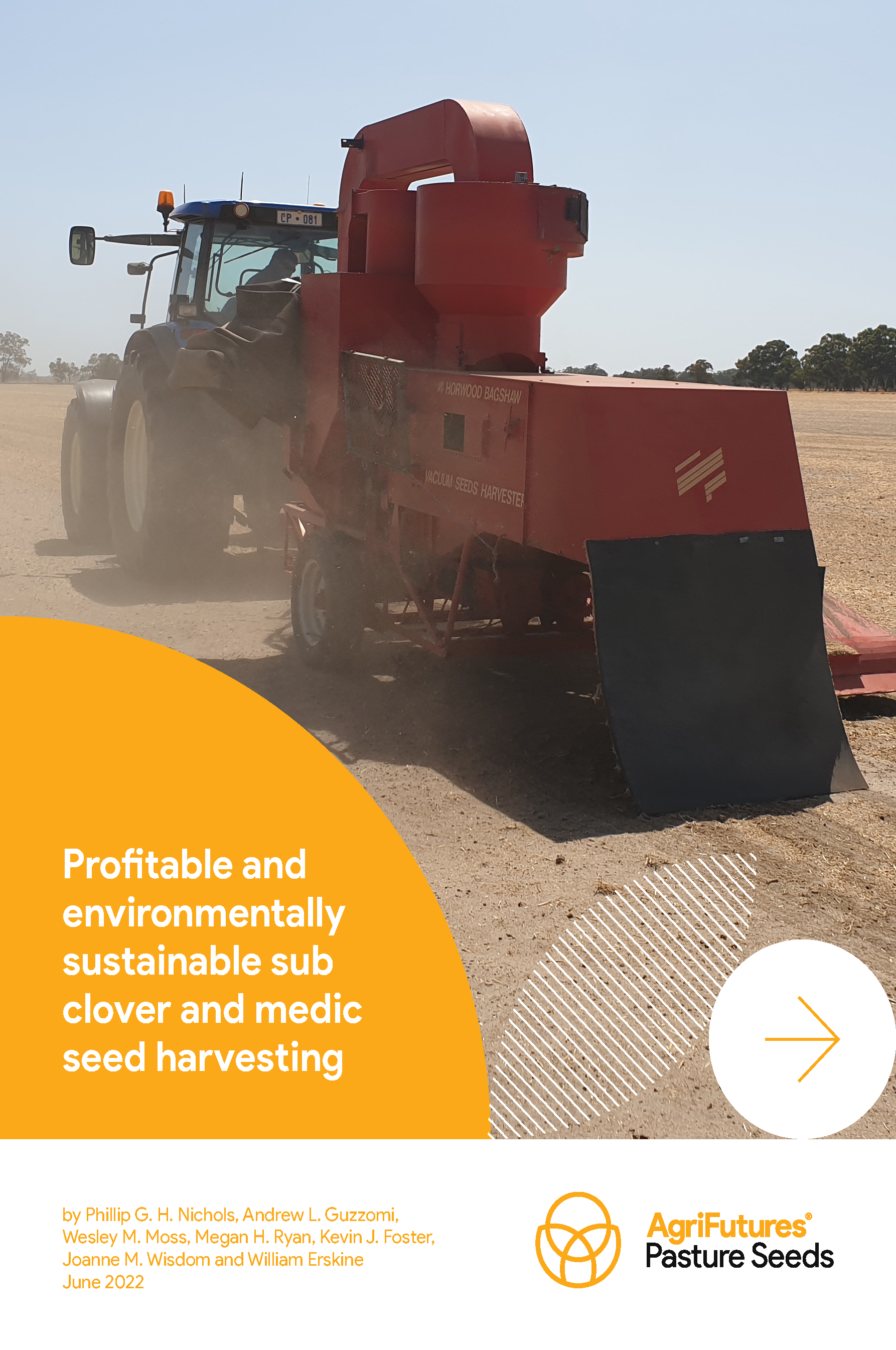 PASTURE SEEDS
PASTURE SEEDS
Profitable and environmentally sustainable sub clover and medic seed harvesting

127 pages
Published: 23 Sep 2023
Author(s): Phillip G. H. Nichols, Andrew L. Guzzomi, Wesley M. Moss, Megan H. Ryan, Kevin J. Foster, Joanne M. Wisdom, William Erskine
ISBN: 978-1-76053-421-9
-
Download report PDF
Download -
Purchase a hard copy - AUD $60
Subterranean clover (sub clover; Trifolium subterraneum) has been sown across more than 29.3 M ha (Nichols et al. 2012), demonstrating its global importance to animal production systems as a valuable, nutritious animal feed source. Annual medics (Medicago spp.) also provide an important livestock feed source, having been sown over approximately 24.6 M ha.
A major agronomic advantage of sub clover is its ability to bury its burrs, which protects the seed from livestock while they are grazing the pasture, meaning the pasture can persist productively for decades without having to be resown. However, this unique attribute also makes sub clover extremely difficult to harvest. The seed must be brought to the surface of the soil before it can be harvested for seed production. On the other hand, most annual medics drop their pods onto the ground at seed maturity. Burrs and pods of both species need to be collected from the surface, which prevents traditional crop harvesters from being used. As a result, specialised seed harvesting systems have been developed for sub clover and annual medics.
The dominant seed harvesting machine is the Horwood Bagshaw (HB) Clover Harvester, developed in the early 1960s, which uses suction to gather burrs or pods from the soil surface and threshes the seed. This is a slow, inefficient system that involves multiple machinery passes and leaves the soil prone to erosion. These issues have resulted in a declining base of seed growers that threatens the sustainability of the sub clover industry.
Within this context, the AgriFutures Pasture Seeds Program invested in this research, which seeks to address long- and short-term challenges associated with sub clover and medic harvesting. This project has focused on sub clover as the more challenging of the two species to harvest, with the view that many challenges of medic harvest would be solved while addressing the challenges of sub clover harvest.
The short-term challenges are primarily associated with the ageing fleet of existing sub clover harvesters. To address this, the project team consulted with a broad range of industry members to uncover the modifications growers are making to the HB Clover Harvester. The outcome is the collation and evaluation of a range of options for modifying HB Clover Harvesters, which growers could apply to existing machinery to increase efficiency in the short term.
However, the research recognises these short-term modifications do not address the issue of the ageing fleet. This can only be addressed through implementation of new harvesting technology in the sub clover and medic industries. The key challenge of employing new harvesting technology is the relatively small size of the sub clover and medic seed industry, meaning the viability of developing and manufacturing a completely new machine is limited. Therefore, this research has focused on adapting existing harvesting machinery from other industries. The project has reported promising results from testing the use of a standard peanut harvester to harvest sub clover seed. Further research, testing and modification is required before this technology is ready for commercial use by the sub clover and medic industries.



